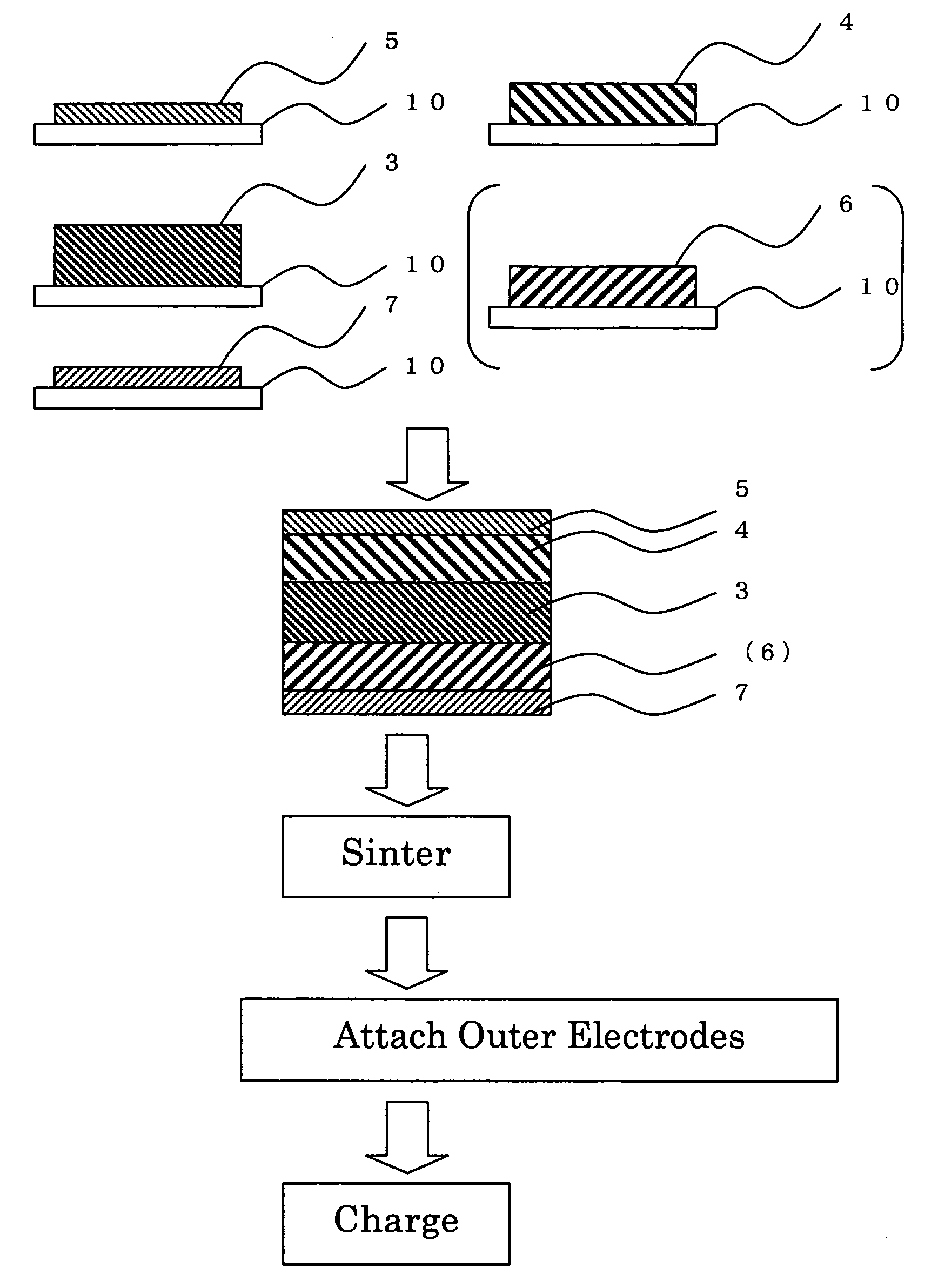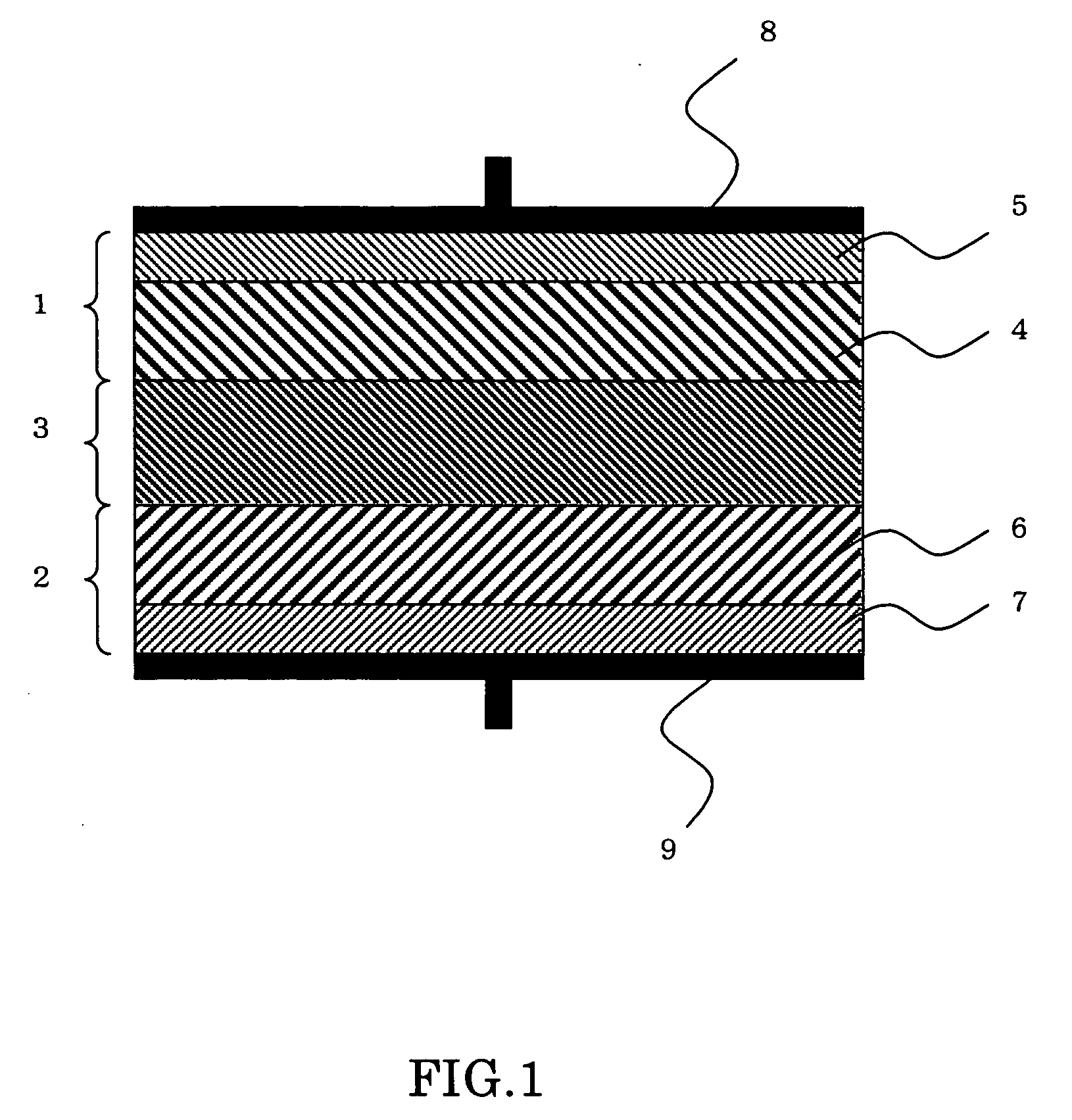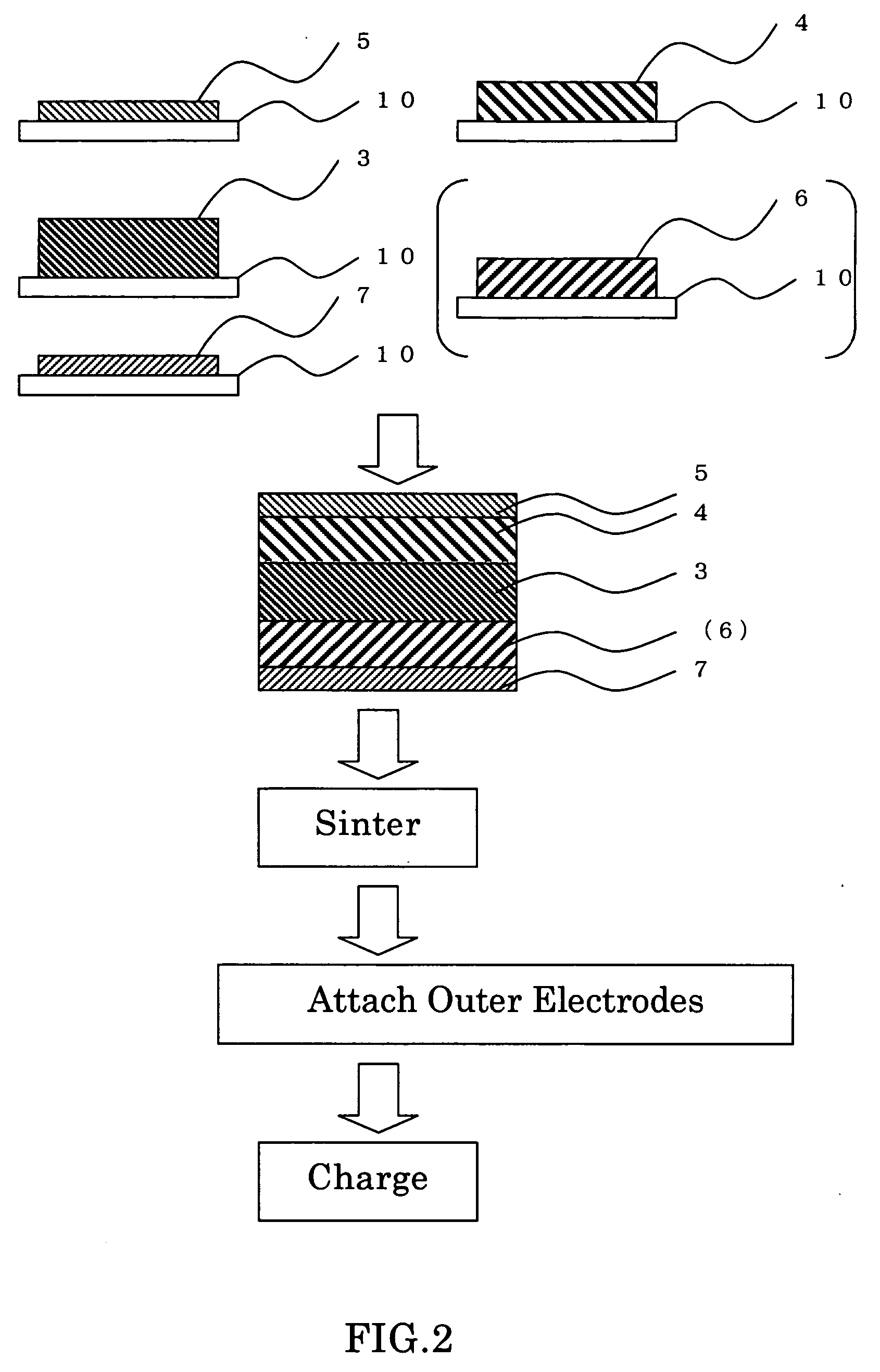Rechargeable battery and method for fabricating the same
a rechargeable battery and battery technology, applied in the field of rechargeable batteries, can solve the problems of increasing the time consumed for film lamination, limiting the thinning and miniaturization of the battery, and the difficulty of film lamination, so as to achieve excellent reversibility of absorption and release of lithium ions, prolong the cycle life of the battery, and excellent battery characteristics
- Summary
- Abstract
- Description
- Claims
- Application Information
AI Technical Summary
Benefits of technology
Problems solved by technology
Method used
Image
Examples
example 1
[0046] A rechargeable battery, also called secondary battery, was prepared by a method having the steps which follow. The battery has a unitary laminate structure such as shown in FIG. 1. Some major process steps in the manufacture of such battery are illustrated in cross-section in FIG. 2.
[0047] A slurry was prepared by admixture and blend of chosen inorganic solid electrolytic materials into N-methylpyrrolidone (NMP), which are 95 weight percent (wt %) of lantern lithium titanate (LixLayTiO3) powder and 5 wt % of polyvinyliden fluoride (PVdF). Then, deposit this slurry on a carrier sheet 10, followed by dehydration. This resulted in an inorganic solid electrolyte layer 3 being formed on the carrier sheet 10.
[0048] A slurry was prepared by mixture and blend of 95 wt % of antimony-doped tin oxide (SnO2) powder and 5 wt % of polyvinyliden fluoride (PVdF) into N-methylpyrrolidone (NMP). Deposit this slurry on carrier sheets 10, and then dry it, resulting in a positive current collec...
example 2
[0053] A battery was formed, which is similar to that of Example 1 except that its positive and negative current collector layers are made of an indium oxide (In2O3)
[0054] The battery completed is then trimmed or diced vertically relative to its laminate faces. As a result of execution of SEM-EDX analysis and XRD analysis, there was affirmed the presence of a Li—In alloy layer for use as the negative active layer 6 between the negative collector sheet 7 and the inorganic solid electrolyte layer 3.
example 3
[0055] A battery was formed, which is similar to that of Example 1 except that its positive and negative collector layers are made of zinc oxide (ZnO).
[0056] The battery completed is then diced vertically relative to its laminate faces. Then, SEM-EDX analysis and XRD analysis were done to affirm the presence of a Li—Zn alloy layer for use as the negative active layer 6 between the negative collector sheet 7 and inorganic solid electrolyte layer 3.
PUM
| Property | Measurement | Unit |
|---|---|---|
| Electric potential / voltage | aaaaa | aaaaa |
| Electrical conductor | aaaaa | aaaaa |
Abstract
Description
Claims
Application Information
 Login to View More
Login to View More - R&D
- Intellectual Property
- Life Sciences
- Materials
- Tech Scout
- Unparalleled Data Quality
- Higher Quality Content
- 60% Fewer Hallucinations
Browse by: Latest US Patents, China's latest patents, Technical Efficacy Thesaurus, Application Domain, Technology Topic, Popular Technical Reports.
© 2025 PatSnap. All rights reserved.Legal|Privacy policy|Modern Slavery Act Transparency Statement|Sitemap|About US| Contact US: help@patsnap.com



